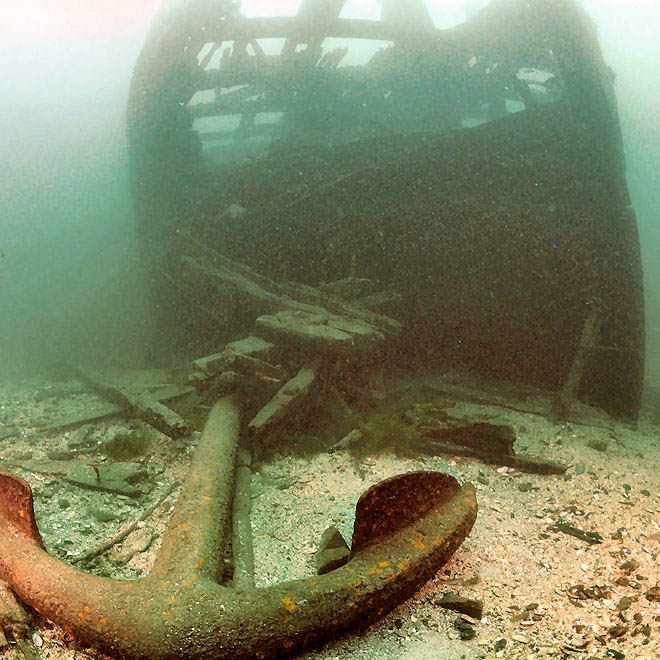The Robert Gaskin shipwreck in Brockville, Ontario is a popular vessel wreck for divers. It is situated 2500′ east of the Brockville Pier. Access to the wreck is usually via boat, given the obvious proximity to the edge (450 m). Overall the current is low and the visibility is strong. Some experienced divers may leave from the riverside to the Robert Gaskin but ample air is required. She lies perpendicular to the current. Her bow points to shore at a depth of 55 feet and the stern rests at 69 feet. Divers can easily visit through the hold, and exit through the stern door.
The Robert Gaskin is a double iron masted rigged wood barge built in 1863 by Charles W. Jenkings in Kingston Ontario. She initially was a “carvel” (highly manoeuvrable sailing ship) at 113′ x 26′, 3332 tonne and had a square stern but no galley or figurehead. The Gaskin was initially built for the ocean, but instead was used between Prescott, Milwaukee and Wisconsin to move grain and stone. She hit a shoal as a sailing vessel, and sank. Saved and put back into service, her masts and rigging were removed as she was converted to a cargo barge. Many sailing ships in that era were converted because steam vessels became more prevalent. Again, she fell under the water, was repaired and patched up again.
In 1889 the William Armstrong ferry sunk close to Brockville. Refloating efforts were quickly undertaken, and the task of bringing it to the surface was assigned to two boats. On September 18, 1889, the McArthur Tug, the Robert Gaskin and a team of divers installed steel pontoons on the Armstrong to assist her to climb to the surface. Air was pumped into the pontoons and the chain linking one of the pontoons gave way. The pontoon came to the surface at full tilt and hit Robert Gaskin’s wooden hull. The shock hole was so large, immediately the Gaskin sank. The crew barely had time to jump out on the McArthur. After this, no more attempts were made to salvage the William Armstrong Ferry.
This wreck is recommended as an advanced dive due to the possibility of heavy boat traffic, current and a silt bottom which can easily be stirred up. Visibility is about 20-40 feet and there is no thermocline.
Thanks to Robert Taillon for his video.







